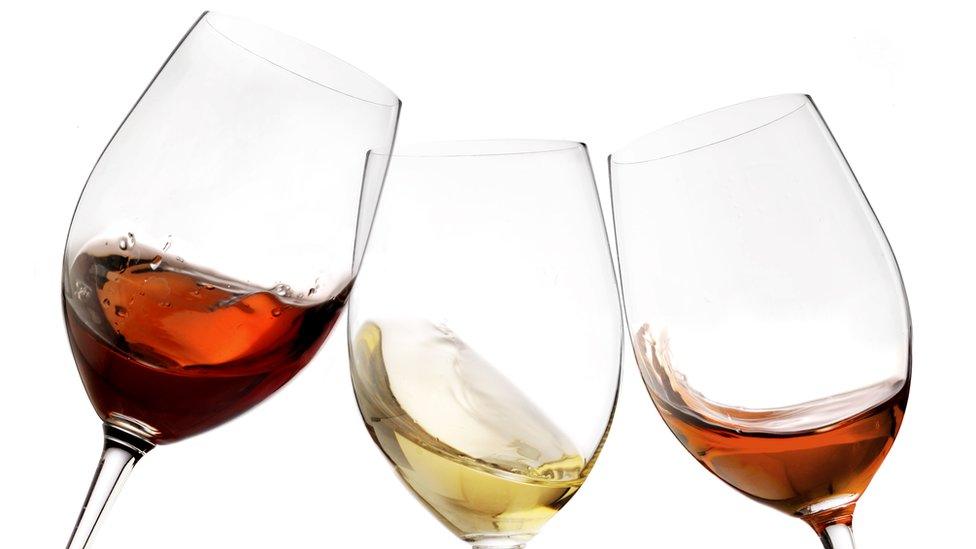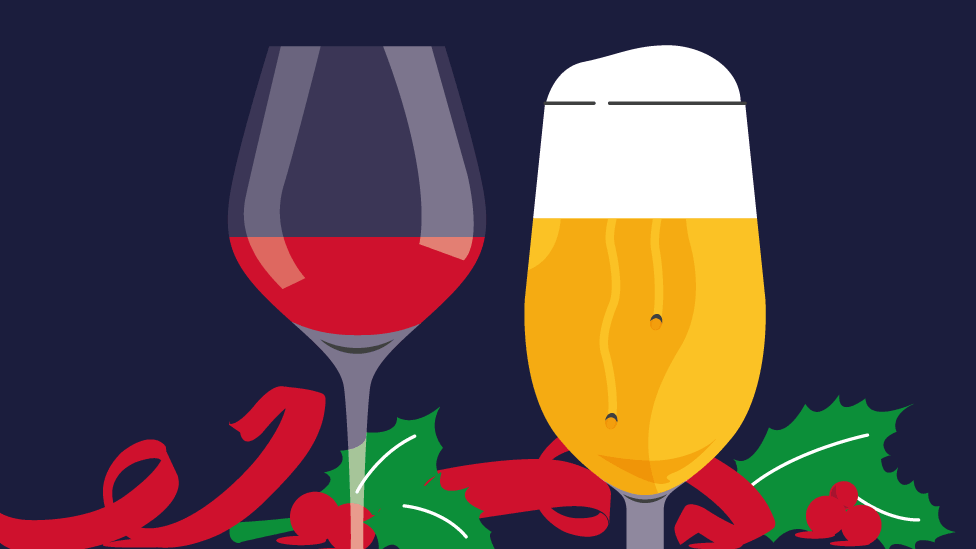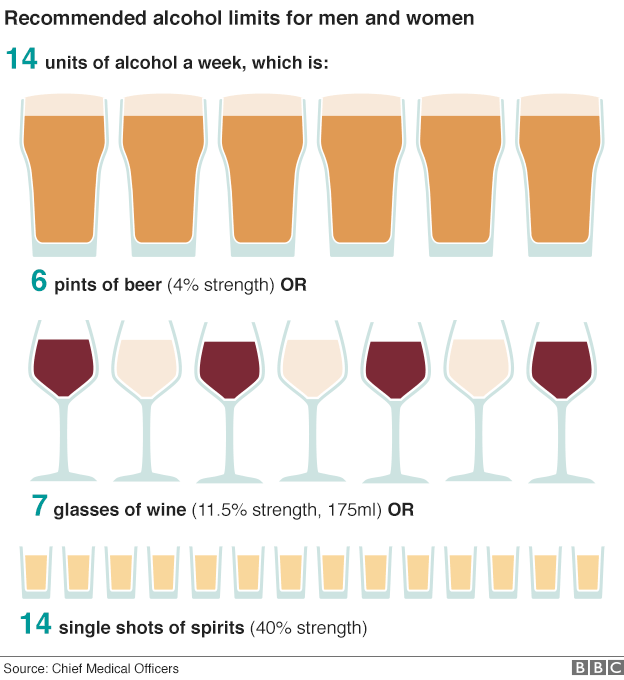Is size important when it comes to wine glasses?
- Published
- comments

If your wine was served in a smaller glass, would you drink less of it?
That is the question being posed in a study, published in the BMJ,, external into the growing size of wine glasses.
University of Cambridge researchers found glass size grew from an average 66ml in the 1700s to 449ml today - a near sevenfold increase - and wine drinking nearly doubled from 1980-2004.
"When it comes to how much we drink, wine glass size probably does matter," says study author Prof Theresa Marteau.
The increase in the capacity of wine glasses has been more rapid since the 1990s.
The researchers think one reason for this could be that the demand for larger glasses by the US market was met by an increase in the size of glasses made in England.
'Highly plausible'
Pubs generally sell wine in measures of 125ml, 175ml and 250ml.
Wine writer Jancis Robinson is one of those who believes that larger glasses and higher consumption are likely to go hand in hand.
"I have long been a critic of the 175ml wine glass," she says.
"Not just because it encourages people to drink more than they intended, but also because white and pink wines tend to warm up in them, encouraging people to finish their contents before they get too warm to be refreshing."
But a British Beer and Pub Association (BBPA) spokesman told the BBC that pubs must offer smaller measures so that customers had a choice.

Prof Marteau says that in the same way larger plates mean people eat more, evidence suggests a similar effect for wine glasses, although the researchers could not prove this.
"We speculate there are two main mechanisms: capacity - the larger a container, the more we pour into it, and perceptual - the same amount looks smaller in a larger container than a smaller one," she says.
"Given we often regulate our consumption in units such as one slice of cake or one cup of coffee, if we perceive we have not had a full glass of wine, this might lead to us having another glass."


Booze calculator: What's your drinking nationality? Find out how your drinking measures up to the average from countries around the world.

Prof Marteau and her team conducted experiments in three Cambridge bars to test the theory.
They increased glass sizes while leaving serving sizes the same. In two of the three bars, sales increased.

In the 1700s, you may have drunk your wine from an enamelled Jacobite portrait glass like this
While alcohol is the third leading risk factor for death and disability, external after smoking and obesity, according to Public Health England, levels of drinking have actually dropped in Britain.
A 2016 poll of nearly 8,000 Britons found that just under 60% had had a drink in the past week - the lowest rate since the survey began, in 2005.
Part of this could be down to a campaign to remove a billion units of alcohol from the market in various ways.
You might also like:
However, there is a practical reason for serving wine in different size glasses - to affect its taste and quality.
Miles Beale, chief executive of the Wine and Spirit Trade Association, told the BBC: "Red wine, for example, is served in a larger glass to allow it to breathe, something which perhaps wasn't a priority 300 years ago.
"It is widely recognised that moderate and responsible consumption of alcohol is compatible with a healthy lifestyle."
Mr Beale added that in the past decade, "volume sales of wine in Britain have declined by 6%, and the volume of wine consumed per person has dropped 10%".

Seven standard 175ml glasses of wine is the weekly recommended limit
Rosanna O'Connor, director of alcohol and drugs at Public Health England, told the BBC: "It's important people understand how much alcohol is in what they drink, some glasses of wine can contain as many as three units.
"We recommend people try to follow the advice of the UK Chief Medical Officers and not to drink regularly more than 14 units a week."